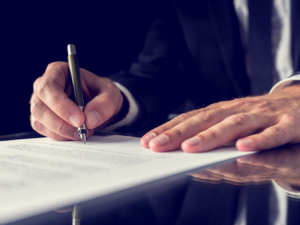(Bloomberg) -- Australian Prime Minister Anthony Albanese said his government has reached out to Beijing to raise concerns over what he described as a “dangerous maneuver” between a Chinese fighter jet and an Australian surveillance plane over the South China Sea.
According to Australia’s Department of Defence, a RAAF P-8 aircraft was undertaking routine maritime surveillance activity in the region on May 26 when it was intercepted by a Chinese J-16 fighter aircraft. The Chinese jet flew “very close to the side” of the P-8 aircraft, before cutting in front of the Australian plane and releasing a “bundle of chaff which contains small pieces of aluminum,” Defense Minister Richard Marles said Sunday.
At a press conference in Perth on Sunday, Albanese said Australia was concerned about the incident, which he claimed had represented a safety threat to the aircraft and its crew. The Australian leader said his government had reached out to China “through appropriate channels.”
“The Department of Defence has for many decades undertaken maritime surveillance activities in the region and does so in accordance with international law, exercising the right to freedom of navigation and overflight in international waters and airspace,” Albanese said.
Chinese Foreign Ministry spokesman Zhao Lijian said Monday at a regular press briefing in Beijing that the country’s military always follows international law and conducts operations in a “safe” manner. “No country is allowed to infringe upon China’s sovereignty and security, and undermine peace and stability in the South China Sea under the pretext of freedom of navigation,” he added.
In recent years, the Chinese government has expanded its control over the South China Sea, which it insists is part of its national territory despite several overlapping claims from neighboring countries such as the Philippines and Vietnam. Since 2015, Beijing has built and militarized a number of artificial islands to solidify its claims.
Last week, the Canadian military reported similar incidents to the Australian encounter, claiming in a statement that Chinese jets had repeatedly buzzed their surveillance planes flying through the region to enforce sanctions on North Korea.
The Canadian Armed Forces claimed the Chinese military jets did “not adhere to international air safety norms” and that the interactions were “unprofessional” and “put the safety of our RCAF personnel at risk.”
The Chinese Defense Ministry said in a Monday statement that Beijing opposes recent “provocations” by Canadian surveillance planes in the name of enforcing sanctions on North Korea and warned such moves endanger the safety of both nations’ personnel.
The apparent aggression by Chinese military aircraft in the region could be a reaction to growing concern that an anti-Beijing coalition is building among Western nations -- especially in the wake of Russia’s invasion of Ukraine, which China has still not condemned.
US President Joe Biden launched a sweeping economic initiative designed to counter China’s influence in the Indo-Pacific last month, while a Australia-UK-US defense accord, known as Aukus, was inked in September. There has also been renewed activity within two other groupings of leading democracies, Five Eyes and the Quad, amid growing concerns about China’s ascendancy.
Malcolm Davis, senior analyst at the Australian Strategic Policy Institute, said it was also possible Beijing could be testing Australia’s new prime minister, who was sworn in on May 23.
Chinese and Australian forces have had a number of tense encounters in recent months. In February, Australia called for a full investigation after it accused a Chinese naval vessel of targeting an Australian defense aircraft with a laser off the country’s northern coastline. Then-Prime Minister Scott Morrison called it an “act of intimidation.”
Davis said the stand-off between the RAAF P-8 and the J-16 aircraft, however, had been particularly dangerous, adding the releasing of chaff into the Australian plane’s engines could have caused a crash, potentially killing the crew.
“This was taking it to the next level. This was an attempt to interfere with the safety of the aircraft. Short of firing missiles or firing the aircraft’s cannon, trying to shoot down the aircraft, this was a hostile act on the part of the Chinese,” he said.
Relations between the Chinese government and Australia have deteriorated in recent years, worsening significantly after Morrison called for an international investigation into the origins of Covid-19 in April 2020. Speaking during a visit to Papua New Guinea this week, China’s Foreign Minister Wang Yi said a reset in the China-Australia relationship required “concrete actions” and there was “no autopilot.”
(Updates with Chinese Foreign Ministry comment in fifth paragraph.)
©2022 Bloomberg L.P.





_-_28de80_-_d88095865f9f1cbb4ecdd37edf61c63efd603428_lqip.png)

